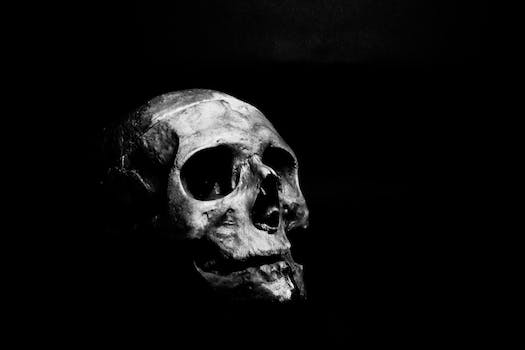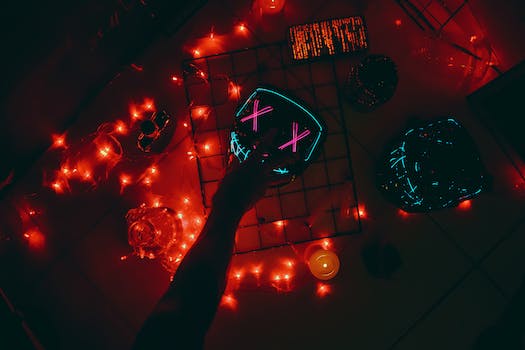Are you ready to be spooked? Get ready for a chilling experience as we dive into the top 10 scary movies that will haunt your dreams. These bone-chilling films are guaranteed to send shivers down your spine and leave you sleepless at night. From supernatural horrors to psychological thrillers, each movie on this list will leave an indelible mark on your imagination. So, grab your popcorn, turn off the lights, and prepare yourself for a journey into the world of nightmares.
- 1. Why Scary Movies are Popular
- 1.1. The Thrill of Adrenaline
- 1.2. The Desire for Suspense
- 1.3. The Cathartic Release
- 1.4. The Social Experience
- 1.5. The Love for the Genre
- 2. Effects of Scary Movies on the Brain
- 2.1. Increased Heart Rate and Blood Pressure
- 2.2. Activation of the Fight or Flight Response
- 2.3. Release of Endorphins and Dopamine
- 2.4. Enhanced Memory Formation
- 2.5. Emotional Resilience and Coping Skills
- 3. The Evolution of Scary Movies
1. Why Scary Movies are Popular
Scary movies have always held a special place in the hearts of moviegoers. There is something thrilling and exhilarating about being scared by a movie that keeps audiences coming back for more. But what is it about scary movies that make them so popular? Why do people willingly subject themselves to the terror and horrors portrayed on the big screen?
One reason why scary movies are popular is the adrenaline rush they provide. When we watch a scary movie, our heart rate increases, our palms get sweaty, and we become more alert. This physiological response is similar to the fight-or-flight response that our ancestors experienced when faced with a threat. It’s a natural instinct that can be addictive, and scary movies provide a safe and controlled environment for us to experience these intense emotions.
Another reason is the thrill of the unknown. Scary movies often play on our fears of the supernatural, the paranormal, and the unexplained. They tap into our deepest anxieties and take us on a rollercoaster ride of suspense and anticipation. The fear of the unknown can be both terrifying and exciting, and scary movies allow us to explore these emotions from the comfort of our seats.
Scary movies also serve as a form of catharsis. They allow us to release pent-up emotions and fears in a controlled manner. By watching a scary movie, we can experience fear and terror without actually being in danger. It’s a way for us to confront our fears and overcome them in a safe environment.
In addition, scary movies offer a sense of escapism. They transport us to a different world where we can temporarily forget about our own problems and immerse ourselves in the suspenseful storyline. It’s a way for us to switch off from reality and indulge in the thrill of the movie.
Lastly, scary movies have a social aspect to them. They provide an opportunity for friends and family to come together and share a thrilling experience. Whether it’s screaming together, hiding behind pillows, or discussing the plot twist afterwards, watching a scary movie can create a sense of camaraderie and bonding.
With all these factors combined, it’s no wonder that scary movies continue to be popular. They offer a unique and exhilarating experience that taps into our deepest emotions and fears. So, the next time you’re in the mood for a good scare, grab some popcorn, turn down the lights, and get ready to be haunted by the top 10 scary movies that will linger in your dreams.
1.1. The Thrill of Adrenaline
The Thrill of Adrenaline
One of the main reasons why scary movies are so popular is the adrenaline rush they provide. When watching a scary movie, our bodies go through a physiological response known as the ‘fight or flight’ reaction. Our heart rate increases, our blood pressure rises, and our senses become heightened. This surge of adrenaline creates a thrilling and exciting experience for the audience.
Scary movies tap into our primal instincts and allow us to experience fear in a controlled environment. The suspense, tension, and jump scares in these films trigger our fight or flight response, which can be both terrifying and exhilarating at the same time. It’s like a roller coaster ride for our emotions, where we voluntarily put ourselves in a state of fear and then experience the thrill of overcoming it.
Additionally, scary movies often provide a sense of catharsis. The intense emotions and fear we feel while watching these films can act as a form of release. It allows us to confront our fears in a safe and controlled manner, providing a sense of relief and satisfaction once the movie is over.
Overall, the adrenaline rush and the opportunity to face our fears are some of the key factors that make scary movies popular. They provide a unique and thrilling experience that appeals to our innate desire for excitement and adventure.
1.2. The Desire for Suspense
The Desire for Suspense
Suspense is a powerful emotion that captivates and intrigues us. It is the feeling of anticipation and tension that keeps us on the edge of our seats, unable to look away. This desire for suspense is one of the main reasons why scary movies are so popular. People are drawn to the adrenaline rush that comes with being scared, and the thrill of not knowing what will happen next.
Scary movies provide a safe and controlled environment for experiencing fear. They allow us to confront our deepest fears and anxieties without actually being in real danger. This can be a cathartic experience, as it allows us to release pent-up emotions and feel a sense of relief afterwards.
Furthermore, scary movies tap into our primal instincts. Our ancestors relied on fear as a survival mechanism, and even though we no longer face the same physical threats they did, our brains are still wired to respond to fear in a powerful way. Watching a scary movie triggers a fight-or-flight response, flooding our bodies with adrenaline and increasing our heart rate. This physiological reaction adds to the overall thrill and excitement of the movie.
In addition to the physiological response, scary movies also stimulate our minds. They challenge our intellect and keep us engaged by presenting mysteries, twists, and unexpected turns. The element of surprise is crucial in maintaining suspense, and it keeps us constantly guessing and theorizing about what might happen next.
Overall, the desire for suspense is a fundamental human trait that continues to make scary movies popular. The thrill, the catharsis, and the stimulation they provide make them a captivating form of entertainment, keeping audiences coming back for more.
1.3. The Cathartic Release
Scary movies have always held a special place in the hearts of moviegoers, captivating audiences with their ability to both frighten and entertain. There is something inherently thrilling about the adrenaline rush that comes from watching a horror film, a feeling that can only be described as a cathartic release.
But why are scary movies so popular? What is it about being scared that draws people in and keeps them coming back for more? There are several theories as to why this genre has such a dedicated following.
One reason is that watching a scary movie allows people to experience fear in a controlled environment. It offers a safe way to confront and explore their own fears and anxieties, without any real danger. It’s a way for individuals to test their own limits and see how they react in terrifying situations.
Additionally, scary movies provide a temporary escape from reality. In our everyday lives, we are often faced with stress, responsibilities, and the mundane. Watching a horror film allows us to momentarily forget about our troubles and immerse ourselves in a thrilling and suspenseful narrative.
Furthermore, scary movies tap into our primal instincts. Fear is a basic emotion that has evolved over centuries to protect us from potential danger. When we watch a horror film, our fight-or-flight response is triggered, causing a surge of adrenaline and heightening our senses. This primal reaction can be both exhilarating and addictive.
Lastly, scary movies have a unique ability to create a sense of communal experience. There’s something special about watching a horror film with a group of people, sharing the collective tension and release. It can be a bonding experience, bringing friends and family closer together.
In conclusion, the popularity of scary movies can be attributed to their ability to provide a cathartic release, allowing viewers to confront their fears, escape reality, tap into primal instincts, and create a sense of communal experience. It’s no wonder that these films continue to haunt our dreams and captivate our imagination.
1.5. The Love for the Genre
Scary movies have always had a special place in the hearts of moviegoers. There is a unique fascination and love for the horror genre that can be traced back to the early days of cinema. Whether it’s the adrenaline rush, the thrill of being scared, or the sense of escapism, there is something about scary movies that captivates audiences.
One of the reasons why scary movies are so popular is the adrenaline rush they provide. As human beings, we are wired to seek out excitement and thrill. Scary movies offer a safe and controlled way to experience fear and get our hearts racing. The anticipation of the next jump scare or the suspenseful moments keeps us on the edge of our seats.
Additionally, scary movies tap into our primal instincts. From an evolutionary perspective, our ancestors had to be on high alert to survive in dangerous environments. Watching a scary movie triggers those fight-or-flight responses, making us feel alive and more connected to our basic human nature.
Furthermore, scary movies provide a form of escapism. Life can be mundane and predictable at times, and watching a horror film allows us to step into a different world. We can temporarily forget about our own problems and immerse ourselves in the thrilling and terrifying stories on the screen.
In conclusion, the love for the horror genre is deeply rooted in the human psyche. The adrenaline rush, the connection to our primal instincts, and the sense of escapism all contribute to the popularity of scary movies. So, if you’re a fan of the genre, get ready to be haunted by the top 10 scary movies that will surely leave a lasting impression on your dreams.
2. Effects of Scary Movies on the Brain
Scary movies have a profound impact on the brain, leaving lasting effects that can haunt our dreams. When we watch a scary movie, our brain goes into overdrive, releasing a cascade of chemicals and triggering various physiological responses. One of the most notable effects is the activation of the amygdala, the part of the brain responsible for processing emotions, particularly fear. As the suspense and tension build up in a scary movie, the amygdala becomes hyperactive, heightening our sense of fear and causing our heart rate to increase.
Additionally, scary movies stimulate the release of adrenaline, a hormone that prepares our body for fight or flight. The adrenaline rush we experience while watching terrifying scenes can leave a lasting impact on our brain, making us more alert and vigilant even after the movie has ended. This heightened state of arousal can lead to difficulty falling asleep and may contribute to nightmares.
Furthermore, scary movies can also have an impact on our memory and cognitive processes. The intense emotions and shocking images we encounter while watching these films can create strong memories that are difficult to forget. Our brain may replay these disturbing scenes, especially during vulnerable moments such as when we are trying to sleep.
In conclusion, scary movies have a profound effect on the brain, activating the amygdala, releasing adrenaline, and influencing our memory and cognitive processes. These effects can linger long after the movie is over, haunting our dreams and altering our emotional state. It is important to be mindful of the potential impact of scary movies on our mental well-being and to engage in self-care practices to mitigate any negative effects.
2.1. Increased Heart Rate and Blood Pressure
Watching scary movies can have a significant impact on the body, particularly on heart rate and blood pressure. When we are engrossed in a terrifying scene, our heart rate tends to increase rapidly. This heightened heart rate is a natural response to fear and excitement. As the suspense builds up and the intensity of the movie rises, our heart pumps faster, preparing our body for a fight-or-flight response.
In addition to an increased heart rate, scary movies can also cause a spike in blood pressure. When we experience fear or anxiety, our body releases stress hormones such as adrenaline, which leads to a temporary rise in blood pressure. This physiological response is part of the body’s instinctual survival mechanism.
It is important to note that the effects of scary movies on heart rate and blood pressure may vary from person to person. Some individuals may have a more pronounced reaction, while others may not experience significant changes. Factors such as personal sensitivity, previous exposure to frightening stimuli, and overall health can influence the magnitude of these physiological responses.
While the temporary increase in heart rate and blood pressure during scary movies may be unsettling for some individuals, it is generally harmless for most healthy individuals. However, those with pre-existing heart conditions or hypertension should exercise caution and consult with their healthcare provider if they have concerns about watching scary movies.
2.2. Activation of the Fight or Flight Response
The activation of the fight or flight response is a natural physiological reaction that occurs in response to a perceived threat or danger. This response, also known as the acute stress response, prepares the body to either confront the threat or flee from it. It involves the release of stress hormones such as adrenaline and cortisol, which stimulate various bodily changes to enhance physical performance and increase the chances of survival.
When watching scary movies, the brain can interpret the intense and suspenseful scenes as potential threats, triggering the fight or flight response. As the heart rate increases, blood pressure rises, and breathing becomes rapid and shallow, the body prepares itself for a potential danger that is perceived as real in the moment. This response can be accompanied by the dilation of the pupils, increased muscle tension, and a heightened state of alertness.
The effects of scary movies on the brain can be profound. The amygdala, which is responsible for processing emotions and fear, becomes highly active during intense and frightening scenes. The brain’s reward system, involving the release of dopamine, is also activated, contributing to the heightened emotional experience.
Additionally, watching scary movies can trigger the release of endorphins, which are natural painkillers and mood enhancers. These endorphins can create a sense of exhilaration and excitement, even though the individual may feel fear or anxiety in response to the movie.
However, it is important to note that the fight or flight response and the effects of scary movies on the brain vary from person to person. Some individuals may experience a more intense response, while others may be less affected. Factors such as personal sensitivity, previous experiences, and individual coping mechanisms can influence how one reacts to scary movies.
In conclusion, the activation of the fight or flight response when watching scary movies is a natural and adaptive reaction to perceived threats. The effects on the brain can be both thrilling and unsettling, as the body prepares itself for potential danger. Understanding these physiological and psychological responses can provide insights into the impact of scary movies on our minds and emotions.
2.3. Release of Endorphins and Dopamine
Scary movies have a profound effect on the brain, triggering the release of endorphins and dopamine. These neurotransmitters play a crucial role in our mood and overall well-being. When we watch a scary movie, our brain perceives the intense and thrilling scenes as a threat, activating the fight-or-flight response. As a result, our body releases endorphins, which are natural painkillers, to help us cope with the perceived danger. This surge of endorphins contributes to a sense of euphoria and exhilaration while watching the movie.
Additionally, scary movies also stimulate the release of dopamine, a neurotransmitter associated with pleasure and reward. The suspenseful and fear-inducing moments in these movies create a sense of anticipation and suspense, leading to an increased release of dopamine in the brain. This dopamine rush can intensify our emotional response and enhance the overall enjoyment of the movie.
It is worth noting that individuals may have different reactions to scary movies, and the release of endorphins and dopamine can vary from person to person. Some individuals may find the experience more thrilling and enjoyable, while others may feel more overwhelmed or anxious. Nonetheless, the impact of scary movies on the brain’s chemistry is undeniable, making them a popular choice for those seeking an adrenaline rush and a memorable movie-watching experience.
2.4. Enhanced Memory Formation
When it comes to the effects of scary movies on the brain, one interesting aspect to consider is how they enhance memory formation. Psychological studies have shown that the intense emotions and adrenaline rush experienced while watching a scary movie can have a powerful impact on memory. This is because the brain is in a heightened state of alertness, and the amygdala, which is responsible for processing emotions, is activated. As a result, the brain tends to encode the details of the movie more vividly, leading to enhanced memory formation.
Additionally, scary movies often involve unexpected and suspenseful plot twists, which further stimulate the brain’s memory centers. When the brain is exposed to unpredictable events, it activates the hippocampus, a region crucial for memory consolidation. This heightened activation of the hippocampus during scary movie viewing can contribute to improved memory retention.
Moreover, the fear and anxiety induced by scary movies can also trigger the release of stress hormones like cortisol. While high levels of cortisol can be harmful in the long run, in moderation, they can actually help in memory consolidation. This means that the temporary stress response elicited by scary movies can potentially boost memory formation.
In conclusion, watching scary movies can have a positive impact on memory formation. The intense emotions, unexpected plot twists, and release of stress hormones all work together to enhance the brain’s ability to encode and retain information. So, if you’re looking to give your memory a little boost, sitting down for a thrilling horror flick might just do the trick!
2.5. Emotional Resilience and Coping Skills
Scary movies have long been a popular form of entertainment, enticing audiences with their ability to elicit strong emotional responses. These films often tap into our deepest fears and anxieties, taking us on a rollercoaster ride of suspense and terror. While the effects of scary movies on our emotions are well-known, their impact on the brain is equally fascinating.
Watching a scary movie triggers a complex series of reactions in the brain. As we sit on the edge of our seats, our amygdala, the part of the brain responsible for processing emotions, goes into overdrive. It releases stress hormones, such as adrenaline and cortisol, preparing our bodies for a fight-or-flight response. This heightened state of alertness can lead to increased heart rate, blood pressure, and even sweaty palms.
Furthermore, scary movies often activate the brain’s reward system. When we experience fear, our brains release dopamine, a neurotransmitter associated with pleasure and reward. This release of dopamine can create a paradoxical sensation of enjoyment amidst the fear and discomfort. It’s what keeps us coming back for more, seeking out that thrilling adrenaline rush.
However, the effects of scary movies on the brain are not limited to the immediate viewing experience. Research has shown that prolonged exposure to frightening content can have lasting effects on our mental well-being. Some individuals may develop symptoms of anxiety or post-traumatic stress disorder (PTSD) after watching particularly distressing movies.
On the other hand, scary movies can also serve as a form of exposure therapy, allowing individuals to confront their fears in a controlled environment. By repeatedly exposing themselves to scary stimuli, they may gradually desensitize themselves and learn coping mechanisms for dealing with fear and anxiety in real-life situations.
In conclusion, the effects of scary movies on the brain are multifaceted. They can trigger intense emotional reactions, activate the brain’s reward system, and potentially impact our mental health. Whether you love the thrill of a good scare or prefer to avoid the horrors of the silver screen, it’s clear that scary movies have a profound influence on our minds.
3. The Evolution of Scary Movies
Scary movies have come a long way since their inception. From the early days of silent films to the modern era of advanced special effects, the evolution of scary movies has been a fascinating journey. These films have continued to push boundaries and explore the depths of human fear, leaving audiences on the edge of their seats. With each passing decade, new techniques and storytelling methods have emerged, adding to the horror genre’s rich history. The evolution of scary movies has not only provided entertainment but has also influenced other forms of media, such as literature and television. Today, we will delve into the top 10 scary movies that have left a lasting impact on viewers, haunting their dreams long after the credits roll.
3.1. Early Horror Films
Early Horror Films:
The origins of scary movies can be traced back to the early years of cinema. In the late 19th and early 20th centuries, filmmakers experimented with the horror genre, exploring themes of fear, suspense, and the supernatural. These early horror films laid the foundation for the evolution of scary movies we know today.
One notable early horror film is ‘Nosferatu’ (1922), directed by F.W. Murnau. This silent German expressionist film introduced the iconic vampire character, Count Orlok. ‘Nosferatu’ set the stage for future vampire movies and became a classic in the horror genre.
Another influential early horror film is ‘The Cabinet of Dr. Caligari’ (1920), directed by Robert Wiene. This German silent film is considered one of the first examples of psychological horror. Its unique visual style and twisted narrative made it a groundbreaking work in the genre.
As cinema technology advanced, so did the possibilities for creating terrifying experiences on screen. The introduction of sound in the 1920s opened up new opportunities for filmmakers to enhance the horror elements in their movies. This led to the emergence of iconic horror characters like Dracula, Frankenstein’s monster, and the Wolf Man.
Overall, early horror films played a significant role in shaping the evolution of scary movies. They laid the groundwork for the development of various subgenres within horror and influenced filmmakers for generations to come.
3.2. The Influence of Psychological Thrillers
Psychological thrillers have had a significant influence on the evolution of scary movies. These films delve into the human psyche, targeting our deepest fears and insecurities. Unlike traditional horror movies that rely on jump scares and gore, psychological thrillers engage the audience on a psychological and emotional level, leaving a lasting impact.
Over the years, scary movies have transformed from simple monster tales to complex narratives that explore the darkest corners of the human mind. The evolution of scary movies can be attributed, in part, to the popularity and success of psychological thrillers.
Psychological thrillers challenge the audience’s perceptions and manipulate their emotions, creating a sense of suspense and anxiety. These movies often feature intricate plot twists, unreliable narrators, and mind-bending scenarios that keep viewers on the edge of their seats.
Moreover, psychological thrillers often incorporate psychological concepts and theories, adding depth and complexity to their narratives. They explore themes such as identity, memory, perception, and the nature of reality, forcing audiences to question their own beliefs and perceptions.
The success of psychological thrillers has paved the way for a new wave of scary movies that prioritize psychological tension over cheap scares. Filmmakers have realized that tapping into the psychological aspects of fear can have a more profound and lasting impact on audiences.
In conclusion, the influence of psychological thrillers on the evolution of scary movies cannot be underestimated. These films have pushed the boundaries of the genre, introducing new storytelling techniques and exploring the depths of the human mind. As audiences continue to crave more intellectually stimulating and psychologically engaging content, the influence of psychological thrillers is likely to grow even further.
3.3. Modern Horror Subgenres
Modern Horror Subgenres
The horror genre has evolved over the years, giving birth to numerous subgenres that cater to different fears and preferences of the audience. These modern horror subgenres have brought fresh and innovative elements to the scary movie industry, pushing the boundaries of what can terrify and haunt us on the big screen.
1. Psychological Horror: This subgenre focuses on the psychological torment of the characters, often delving into their deepest fears, traumas, and unstable mental states. It plays with the viewer’s mind, creating an unsettling atmosphere and leaving a lasting impact.
2. Found Footage: Found footage films simulate real-life recordings by presenting the story as if it was captured by the characters themselves. This subgenre adds a sense of realism and immediacy, making the horror feel more authentic and intense.
3. Supernatural Horror: This subgenre revolves around supernatural entities, such as ghosts, demons, or witches. It explores the unknown and unexplainable, creating a sense of dread and the fear of things beyond our understanding.
4. Slasher Films: Slasher films typically feature a psychopathic killer who stalks and brutally murders a group of people. These movies often include suspenseful chase scenes, graphic violence, and iconic villains that have become staples of the genre.
5. Body Horror: Body horror films focus on the grotesque and disturbing transformations or mutilations of the human body. They exploit our innate fears of physical deformity, disease, or bodily harm, often using practical effects to create shocking and unsettling visuals.
6. Monster Movies: Monster movies center around monstrous creatures, whether they are giant monsters wreaking havoc on cities or mythical beasts lurking in the shadows. These films tap into our primal fears of the unknown and the uncontrollable.
7. Found Footage: Found footage films simulate real-life recordings by presenting the story as if it was captured by the characters themselves. This subgenre adds a sense of realism and immediacy, making the horror feel more authentic and intense.
8. Body Horror: Body horror films focus on the grotesque and disturbing transformations or mutilations of the human body. They exploit our innate fears of physical deformity, disease, or bodily harm, often using practical effects to create shocking and unsettling visuals.
9. Supernatural Horror: This subgenre revolves around supernatural entities, such as ghosts, demons, or witches. It explores the unknown and unexplainable, creating a sense of dread and the fear of things beyond our understanding.
10. Psychological Horror: This subgenre focuses on the psychological torment of the characters, often delving into their deepest fears, traumas, and unstable mental states. It plays with the viewer’s mind, creating an unsettling atmosphere and leaving a lasting impact.
These modern horror subgenres continue to evolve and adapt, catering to the ever-changing tastes and fears of horror enthusiasts. Whether you enjoy the psychological mind games or the visceral thrills of slasher films, there is undoubtedly a subgenre that will haunt your dreams.
3.4. The Impact of Technology on Scary Movies
The impact of technology on scary movies has been immense. Over the years, advancements in technology have revolutionized the way scary movies are made and experienced by the audience. From the early days of black and white films to the present era of CGI and virtual reality, technology has played a significant role in enhancing the horror genre.
One major aspect of technology’s impact on scary movies is the level of realism that can now be achieved. With the advancement in special effects, filmmakers can create incredibly lifelike creatures, monsters, and supernatural elements that can terrify the audience. The use of CGI has allowed for more creative and horrifying visuals, making the scares more intense and believable.
Moreover, technology has also transformed the way scary movies are presented to the audience. The evolution of visual and audio effects has made it possible to create immersive and spine-chilling experiences. Surround sound systems and high-definition screens have enhanced the overall atmosphere of fear and suspense. Additionally, the availability of streaming platforms and online distribution has made scary movies easily accessible to a wider audience.
Another significant impact of technology on scary movies is the way they are marketed and promoted. Social media platforms, online trailers, and viral marketing campaigns have made it easier for filmmakers to reach potential viewers and create hype around their movies. The use of advanced digital marketing techniques has allowed for targeted advertising and increased audience engagement.
In conclusion, technology has had a profound impact on scary movies, from the way they are made to the way they are consumed and marketed. As technology continues to advance, we can only anticipate more innovative and terrifying experiences in the world of horror cinema.
3.5. Changing Audience Expectations
Scary movies have come a long way in meeting the changing expectations of their audience. The evolution of this genre has been fascinating to witness. In the early days of cinema, scary movies relied heavily on suspense, atmosphere, and practical effects to create a sense of fear. Films like Nosferatu (1922) and Psycho (1960) set the foundation for what would later become the horror genre as we know it today.
As time went on, audiences became more desensitized to traditional scares, and filmmakers had to think outside the box to keep them engaged. This led to the rise of psychological horror in the 1970s and 1980s. Movies like The Exorcist (1973) and A Nightmare on Elm Street (1984) played with the audience’s mind, delving into the depths of human psychology and creating terror from within.
In recent years, there has been a shift towards more supernatural and paranormal themes in scary movies. With advancements in CGI and special effects, filmmakers are able to bring unimaginable creatures and haunting specters to life on the screen. Movies like The Conjuring (2013) and Hereditary (2018) have redefined what it means to be scared, tapping into our deepest fears and leaving a lasting impact.
Today, the audience’s expectations for scary movies have evolved even further. They crave unique storytelling, unexpected twists, and a sense of realism that hits close to home. Films like Get Out (2017) and A Quiet Place (2018) have pushed the boundaries of the genre, incorporating social commentary and exploring new ways to terrify viewers.
As we continue to embrace advancements in technology and storytelling techniques, it’s exciting to think about what the future holds for scary movies. With every new release, filmmakers have the opportunity to surprise and delight audiences, taking them on a thrilling and unforgettable journey into the realm of fear and nightmares.
Conclusion
In conclusion, these top 10 scary movies are guaranteed to haunt your dreams and leave you feeling terrified. From chilling suspense to bone-chilling horror, these films will keep you on the edge of your seat and make sure you never sleep peacefully again. Brace yourself for a night filled with fear and prepare to be haunted by these unforgettable cinematic nightmares.





